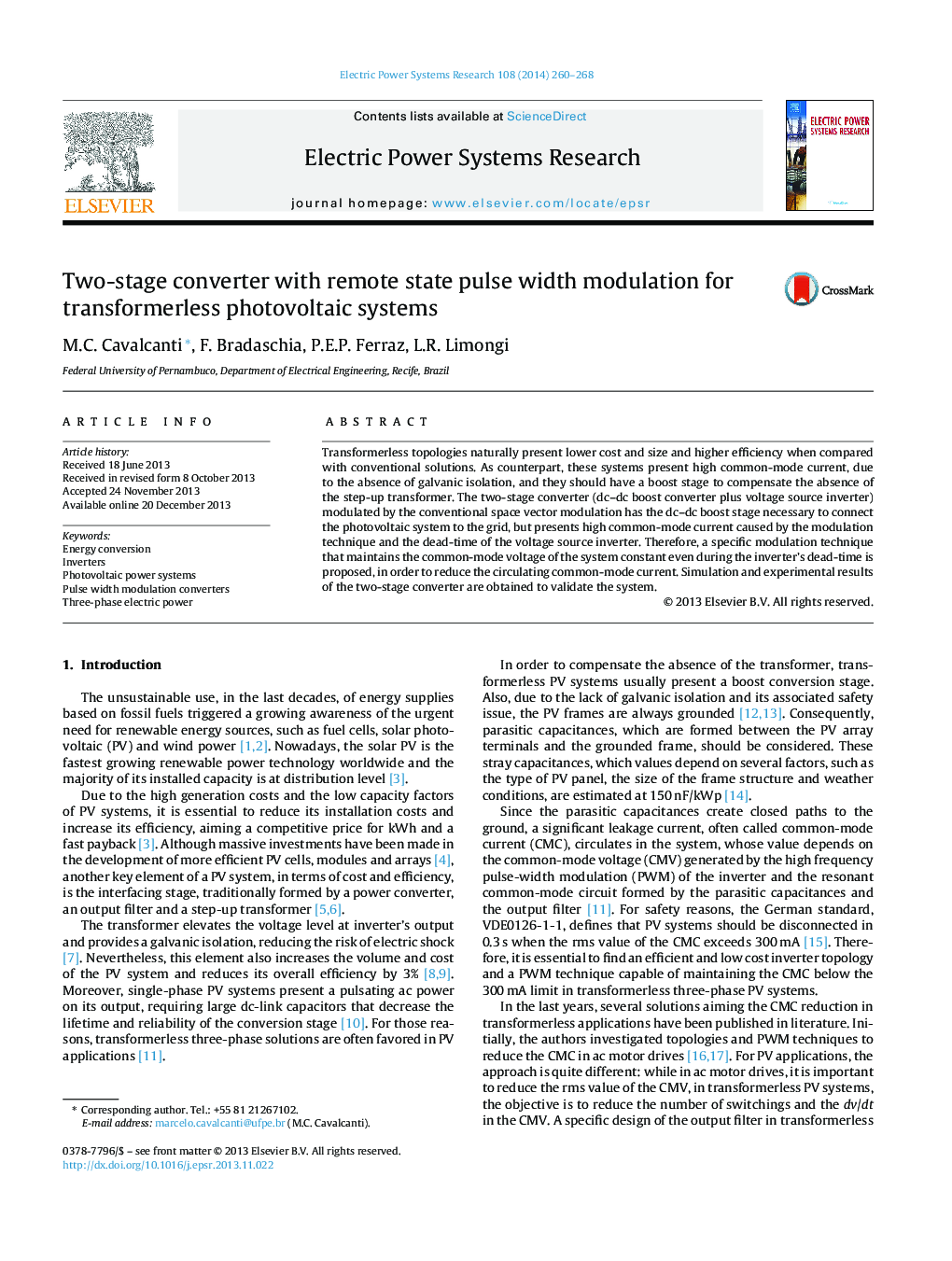| Article ID | Journal | Published Year | Pages | File Type |
|---|---|---|---|---|
| 705110 | Electric Power Systems Research | 2014 | 9 Pages |
•Transformerless topologies naturally present low cost and size and high efficiency.•Aiming high efficiency, the two-stage converter is presented as an alternative.•The two-stage converter has low number of switches, inductors and capacitors.•To reduce the circulating common-mode current, a specific modulation is proposed.•Modulation maintains the common-mode voltage constant even during inverter's dead-time.
Transformerless topologies naturally present lower cost and size and higher efficiency when compared with conventional solutions. As counterpart, these systems present high common-mode current, due to the absence of galvanic isolation, and they should have a boost stage to compensate the absence of the step-up transformer. The two-stage converter (dc–dc boost converter plus voltage source inverter) modulated by the conventional space vector modulation has the dc–dc boost stage necessary to connect the photovoltaic system to the grid, but presents high common-mode current caused by the modulation technique and the dead-time of the voltage source inverter. Therefore, a specific modulation technique that maintains the common-mode voltage of the system constant even during the inverter's dead-time is proposed, in order to reduce the circulating common-mode current. Simulation and experimental results of the two-stage converter are obtained to validate the system.
